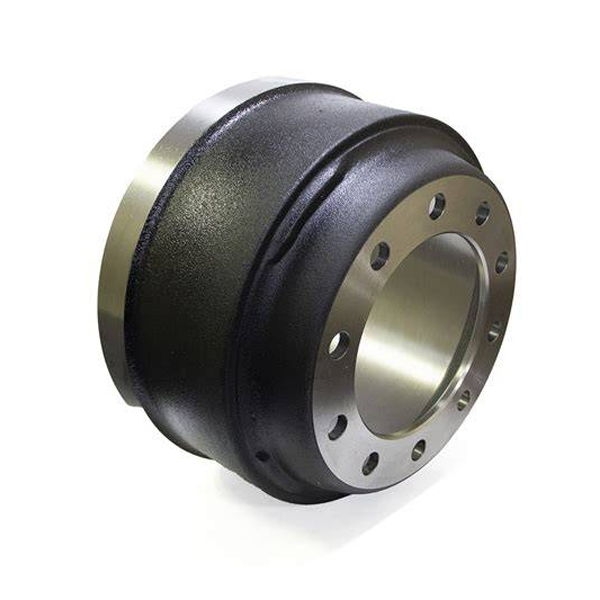
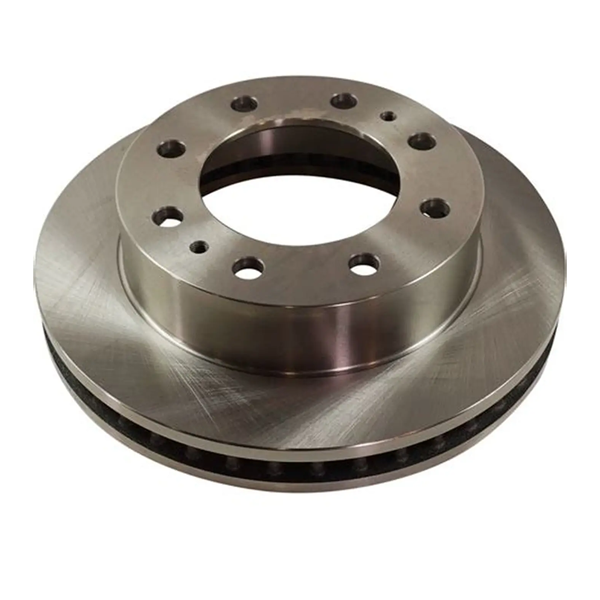
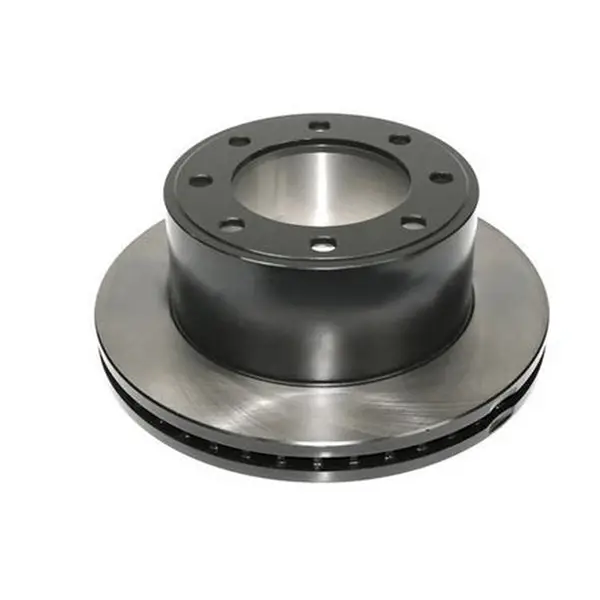
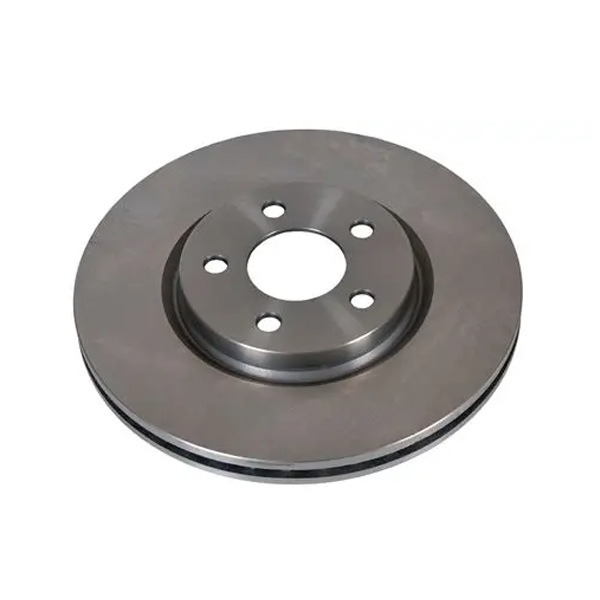
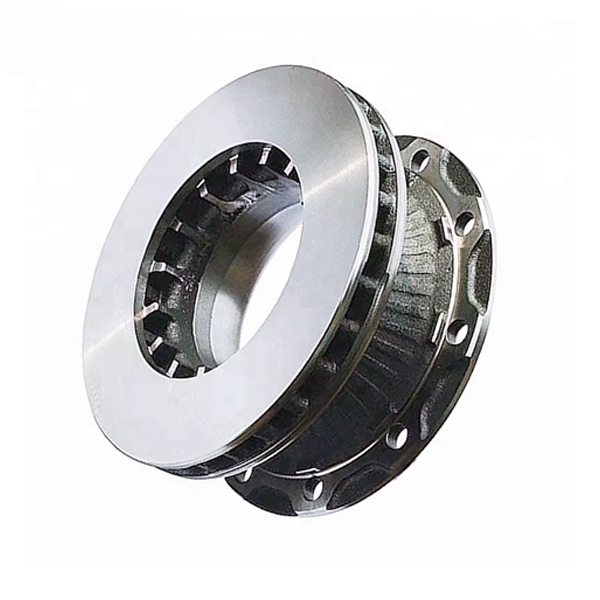
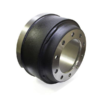
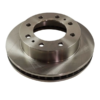
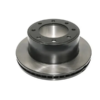
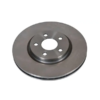
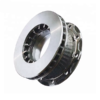
Cast iron brake rotors (brake discs) are key components of automotive braking systems. Made of cast iron (gray cast iron, ductile iron, etc.), Jiangsu Shengrong’s brake rotors are well-received by customers for their excellent wear resistance, heat dissipation, and cost advantages.
Material: gray cast iron/ductile iron
Our cast iron parts are of high precision, wear resistance, low price and fast delivery, and are well received by customers
Material: Cast iron HT250/GG25/HT300/GG30/QT450-10/GGG45
Standard/tollerance: EN1561-2011/GB/T 9439/GB/T 1348
Size and weight: According to drawing
1. Excellent Heat Resistance and Thermal Stability
High Specific Heat Capacity and Thermal Conductivity: Cast iron quickly absorbs and dissipates heat generated by braking, reducing brake fade and maintaining braking efficiency.
Resistant to High-Temperature Deformation: Alloy cast iron (such as those containing chromium or molybdenum) maintains structural stability at high temperatures, preventing rotor cracking or deformation due to uneven thermal expansion.
2. Excellent Wear Resistance
Graphite Lubrication: The graphite flakes in gray cast iron form a lubricating layer during friction, reducing wear on the brake pad and extending service life.
Balanced Hardness: Through controlled carbon content and cooling processes, the cast iron rotor surface has a moderate hardness, providing wear resistance while minimizing brake pad damage.
3. Excellent Vibration and Noise Reduction Performance
Graphite Damping Effect: The graphite structure within the cast iron absorbs vibrations, reducing braking noise (such as squealing or shuddering).
Optimized Microstructure: High-quality cast iron further enhances vibration damping performance through a finer distribution of graphite (such as GG20 grade). 4. Cost-Effectiveness and Mature Process
Low Cost and High Cost-Performance: Cast iron raw materials are inexpensive, and mature casting processes (such as sand casting) make it suitable for large-scale production.
Easy Machinability: Cast iron rotors are easy to turn and drill, reducing post-processing costs.
Passenger and Commercial Vehicles
Economy Vehicles: Gray cast iron (HT250, HT200) is commonly used in ordinary family cars due to its low cost and excellent wear resistance.
Heavy-Duty Vehicles: High-carbon cast iron or alloy cast iron (such as those containing Cr or Mo) is used in trucks and buses, offering enhanced resistance to high temperatures and thermal cracking.
Rail Transit
Trains and subways use high-strength cast iron rotors (such as Compacted Graphite Iron (CGI)) that must withstand frequent braking and extreme loads.
Industrial Machinery
Cranes, mining equipment, and other equipment rely on the high heat capacity and stability of cast iron rotors.
Motorcycles and Racing Cars
Some motorcycles use cast iron rotors; in racing, carbon ceramics are gradually replacing them, though some low-cost events still use high-grade cast iron.
Our brake discs are made of high-quality materials for durability, strong braking force, and quiet, smooth operation. They meet high metallurgical and machining standards, shortening stopping distances and reducing brake fade, extending the life of the brake pads and discs. Mill-balanced and featuring a non-directional surface treatment, the discs provide smooth, vibration-free performance. Our products are built to last and offer consistent performance.
1. Excellent Heat Resistance and Thermal Stability
High Specific Heat Capacity and Thermal Conductivity: Cast iron quickly absorbs and dissipates heat generated by braking, reducing brake fade and maintaining braking efficiency.
Resistant to High-Temperature Deformation: Alloy cast iron (such as those containing chromium or molybdenum) maintains structural stability at high temperatures, preventing rotor cracking or deformation due to uneven thermal expansion.
2. Excellent Wear Resistance
Graphite Lubrication: The graphite flakes in gray cast iron form a lubricating layer during friction, reducing wear on the brake pad and extending service life.
Balanced Hardness: Through controlled carbon content and cooling processes, the cast iron rotor surface has a moderate hardness, providing wear resistance while minimizing brake pad damage.
3. Excellent Vibration and Noise Reduction Performance
Graphite Damping Effect: The graphite structure within the cast iron absorbs vibrations, reducing braking noise (such as squealing or shuddering).
Optimized Microstructure: High-quality cast iron further enhances vibration damping performance through a finer distribution of graphite (such as GG20 grade). 4. Cost-Effectiveness and Mature Process
Low Cost and High Cost-Performance: Cast iron raw materials are inexpensive, and mature casting processes (such as sand casting) make it suitable for large-scale production.
Easy Machinability: Cast iron rotors are easy to turn and drill, reducing post-processing costs.
Passenger and Commercial Vehicles
Economy Vehicles: Gray cast iron (HT250, HT200) is commonly used in ordinary family cars due to its low cost and excellent wear resistance.
Heavy-Duty Vehicles: High-carbon cast iron or alloy cast iron (such as those containing Cr or Mo) is used in trucks and buses, offering enhanced resistance to high temperatures and thermal cracking.
Rail Transit
Trains and subways use high-strength cast iron rotors (such as Compacted Graphite Iron (CGI)) that must withstand frequent braking and extreme loads.
Industrial Machinery
Cranes, mining equipment, and other equipment rely on the high heat capacity and stability of cast iron rotors.
Motorcycles and Racing Cars
Some motorcycles use cast iron rotors; in racing, carbon ceramics are gradually replacing them, though some low-cost events still use high-grade cast iron.
Our brake discs are made of high-quality materials for durability, strong braking force, and quiet, smooth operation. They meet high metallurgical and machining standards, shortening stopping distances and reducing brake fade, extending the life of the brake pads and discs. Mill-balanced and featuring a non-directional surface treatment, the discs provide smooth, vibration-free performance. Our products are built to last and offer consistent performance.

1. Raw material preparation Pig iron, scrap steel, and alloying elements (such as carbon, silicon, and manganese) are mixed in proportion to ensure the mechanical properties of cast iron (such as strength, wear resistance, and heat resistance). Melting: Heating in a cupola or electric furnace to about 1400–1500°C to form molten iron. 2. Casting process (1) Mold preparation Sand casting (commonly used): Resin sand or clay sand is used to make the mold, and the shape of the mold cavity is consistent with the rotor design. Metal mold casting (a few high-performance rotors): Metal molds can be reused, and the casting precision is higher. (2) Pouring Molten iron is poured into the mold and cooled to form a blank rotor (including excess parts such as gates and risers). (3) Cooling and sand removal Natural cooling or controlled cooling rate to avoid stress cracks. A vibrating sand removal machine is used to remove the sand mold and take out the casting. 3. Cleaning and preliminary processing Remove the gate and riser: Remove the excess parts by cutting or grinding. Shot Peening: Surface treatment with steel shot to remove scale and improve surface quality.
4. Heat Treatment (Optional)
Annealing: Eliminates internal stresses and improves machining performance.
Quenching + Tempering (for high-performance rotors): Improves hardness and wear resistance.
5. Precision Machining
Turning: CNC lathes are used to machine friction and mounting surfaces, ensuring dimensional accuracy (e.g., thickness, parallelism).
Drilling: Thread bolt holes and heat dissipation holes (if applicable) are machined.
Dynamic Balancing: Corrects rotor imbalance and prevents high-speed vibration.
6. Surface Treatment
Anti-Rust Coating: Application of anti-rust oil or plating (e.g., zinc or phosphate treatment).
Friction Material Application (e.g., ceramic coating, for some high-performance rotors).
7. Quality Inspection
Dimensional Inspection: Calipers and CMMs are used to verify critical dimensions.
Hardness Testing: Ensures compliance with wear resistance requirements (typically HT250 and above).
Non-Flaw Detection: Ultrasonic or magnetic particle inspection is used to detect internal defects (porosity, cracks). 8. Packaging and Shipping
After cleaning, apply anti-rust oil and package to prevent shipping damage.

Raw Material Control
Pig Iron/Scrap Inspection: Checks chemical composition (C, Si, Mn, S, P, etc.) to ensure compliance with standards (e.g., HT250 or GG20 cast iron requirements).
Alloying: Controls the ratio of alloying elements (e.g., Cr, Mo, Cu) to improve wear resistance and thermal stability.
Smelting Process Monitoring: Records melting temperature, time, and desulfurization treatment to prevent gas inclusions (e.g., hydrogen porosity).

Casting Process Control
Mold Inspection: Ensure the sand or metal mold is free of defects and that dimensions match the drawings (e.g., rotor thickness, ventilation hole location).
Poting Parameters: Control the pouring temperature (typically 1300-1400°C) and pouring speed to prevent cold shuts and shrinkage cavities.
Cooling Rate: Monitor the cooling curve to avoid excessive hardness or residual stresses caused by excessive cooling.

Machining Quality Control
Dimensional Accuracy: After CNC machining, key dimensions (mounting surface thickness, hub center hole diameter, and friction surface parallelism) are inspected.
Surface Roughness: Ra values are controlled within 1.6-3.2μm (friction surfaces require finer finishes).
Dynamic Balancing: The rotor's unbalance at high speeds (e.g., 1000 RPM) must be ≤15 g·cm to avoid brake judder.

Ultrasonic testing: Detects internal pores and slag inclusions (defect size ≤ Φ2mm).
Magnetic particle testing: Checks for surface cracks (especially in the transition area between the heat dissipation ribs and the friction surface).
X-ray testing (spot checks): Used for highly loaded rotors to confirm internal integrity.
Coefficient of friction testing: Simulates braking in a bench test (0.35-0.45 is the acceptable range).
Thermal fatigue testing: Detects cracks after multiple rapid cooling and heating cycles (e.g., 300°C → water cooling, repeated 20 times).
Salt spray testing: Evaluates the corrosion resistance of anti-rust coatings (e.g., galvanized coatings) (no red rust after 96 hours).
1: Advanced technology and equipment standards
Advanced technology: Sand casting, precision casting, and lost foam casting process. Casting sizes according to customer requirements, weights ranging from 0.5kg to 10,000kg
Automation equipment: Equipped with automated production lines, intelligent melting furnaces (medium frequency/high frequency induction furnaces),
Inspection equipment: Chemical composition/spectrometer and mechanical property inspection equipment, three-coordinate measuring machine (CMM), X-ray flaw detector, spectrometer, ultrasonic testing and other high-end quality inspection methods.
2:Quality management system
ISO 9001 (quality management system)
IATF 16949 (automotive industry quality management system, such as automotive parts)
ASTM/EN/JIS and other international material standards.
3:Customization capability
Customized production according to customer drawings, customers only need to pay half of the mold fee to develop new castings. The mold time is short, only 20 days, and the casting time only 10 days. Machining 10 days.
Free express sample to customers, mass production after customer samples are confirmed to be fully qualified. Our company does not require customers to place a minimum order quantity, satisfying customers with a variety of choices
4:Competitive prices
Our company’s prices are very competitive in the industry, and the specific price depends on the casting drawing and the customer’s order quantity. Welcome to inquire








Carbon, silicon, manganese, sulfur, phosphorus, chromium, nickel, copper and other elements

Tensile strength, yield strength, elongation, hardness, impact strength

Three-coordinate inspection, non-destructive testing, pressure testing, etc.

Every parts we will use anti-rust oil packing or primer, keep every parts in good condition after long time shipping.For small parts, we use wood box pallet packing.For bigger parts with pallet packing

Jiangsu Shengrong High end Equipment Manufacturing Industry Co., Ltd is a professional iron casting foundry about 26,000 square meters, Investment of 80 million yuan,include intermediate frequency furnace, new east Seoul horizontal line, cast star horizontal line, micro crystal automatic casting machine, 40T mixer and 20T mixer, core-making machine, shot blasting machine, machining center, inclined rail lathe, slot machine, vertical lathe, flat rail lathe and other equipment.Testing equipment:spectrometer, tensile testing machine, hardness tester, etc., and supporting chemical testing laboratories. Mainly engaged in: mechanical parts, auto parts, industrial pump parts, bearings and transmission parts manufacturing. Company’s main business: QT450-12, 500-7, 600-3 ball mill castings and HT250, HT300 gray iron castings and cast steel, stainless steel and other business, with the increase of business volume, the production is not only to meet the main business, while the product after the process of product processing business development, so that enterprises diversified production. Now the company has more than 100 employees, including a professional management team and new product development.
CONTACT
Get In Touch